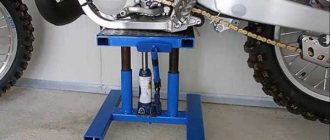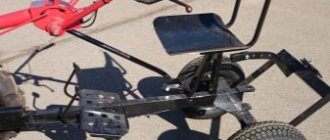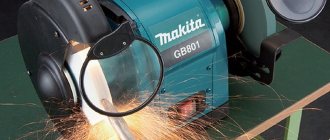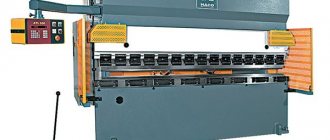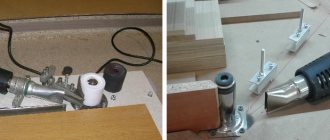Today, a loom in the house is exotic. And some 70-80 years ago every village housewife had one. In many ways, this is a plus, because it means that the modern standard of living allows everyone to purchase ready-made clothes and fabrics, rather than waste time and effort on making them. However, modern women (and men) are increasingly interested in this forgotten craft, recreating ancient village weaving looms. Let's find out a little more about the features of these devices, as well as how you can make them yourself at home.
Weaving machine and its structure
This device was invented before our era. Over the past millennia, its design has been improved. However, some elements remained unchanged.
The basis for fabric production on any loom is vertical threads. They are called the main ones. The very process of creating a canvas is the interweaving of horizontal (weft) threads between the base ones. To do this, manual looms use a shuttle (a rectangular, flat spool with pointed edges). Its shape allows it to easily slide among the warp and pull through the weft threads.
Another important part of any loom is the reed. This is the name given to the frequent comb used to compact the fabric after each shuttle run. Without such “combing”, the finished fabric will be loose and uneven. In most household and industrial weaving looms, a special bar with teeth is used instead of a reed.
The last integral element of each such device is the frame that controls the base threads. Their function is to take turns raising either the even or odd ones. Thus, a more reliable and varied weave of the fabric is achieved.
Machine device
The classic design of a manual loom primarily provides for the presence of two transverse bars for the commercial roller and beam. As a rule, these elements are included in the basic package. The machine cannot do without a thread holder. During the warping process, it is this part where the ends of the threads are fixed. A parting hook is used to thread loops of yarn into the corresponding teeth. This detail is also called a threading into the reed. In addition, the design of the weaving loom provides for the presence of embedded strips. With the help of these elements, the user can keep the base even and smooth. The planks are usually laid on the base as they are wound. When the formation of the base for the machine begins, the function of a heald holder is required - this is performed by a special clamp included in the kit. As an option, kits with wire pins are also purchased, which secure the healds after they are installed for work.
Types of machines
These devices are classified according to different indicators.
- By design they distinguish between flat and round looms. The latter is used to produce only a special type of fabric.
- Based on the width of the fabric produced, narrow (up to 1 m) and wide (over 1 m) machines are distinguished.
- Based on the type of weaving of threads, weaving devices are distinguished that produce simple fabrics (eccentric), with a small pattern (carriage) and large-patterned fabrics (jacquard) for the production of the most complex patterns.
- Regarding the principle of operation, there are: manual, semi-mechanical, mechanical and fully automatic machines.
Particularly worth highlighting are the so-called frame looms. Usually they are completely devoid of any mechanisms; they have to be woven by hand.
Maintenance nuances
The list of activities performed during the maintenance process depends on the specific design. For example, the maintenance of hand-made models requires careful inspection of the structure, which is most often made of wood. Correctly setting up components, strips and clamps is a major part of the craftsman's job. More complex designs of mechanical and automatic units require additional measures. For example, it may be necessary to fill the loom with water in the case of hydraulic devices. Pneumatic equipment also requires separate maintenance of devices that provide air supply. This also requires checking the connecting hoses and nozzles that distribute the flows.
Short story
Judging by ancient Egyptian images, already in those days humanity invented some kind of handloom. Most peoples had a similar design. This is evidenced by the drawings and archaeological finds that have reached us.
As a rule, they were woven from threads of plant (linen, silk, hemp, cotton) and animal origin (wool yarn). Naturally, such fabrics were not very strong and durable. To provide clothes for the family, they had to weave every year. In this regard, almost every peasant family had a home loom.
Although weaving was practiced in every family, there were craftsmen who specialized in the production of special fabrics or carpets (tapestry). For many centuries this profession was very profitable and prestigious.
Everything changed with the advent of the mechanical loom. Now it was possible to produce large quantities of fabric with minimal time and labor. Gradually they began to equip factories that produced cheaper fabric than weavers. Soon the latter were forced out of the market. By the beginning of the 20th century, the weaving profession was losing its former prestige. Now they were engaged in the production of homemade linen only for their own needs.
As a rule, machines inherited from grandmothers were used for this. Or we had to make them ourselves.
Information on how to make a loom was taken in those days from two sources. It was either a manual by I. Levinsky, published back in 1911. The book was called “Improved Handloom”. It contained fairly clear illustrations, with the help of which it was not difficult to assemble the necessary equipment.
The second reference book was V. Dobrovolsky’s manual “How to build a loom and weave simple fabrics,” published in 1924.
Both publications can still be found in libraries today.
By the beginning of the 80s, the standard of living of the peasantry began to rise. This allowed many of them to give up weaving, buying ready-made fabrics in stores. Now the looms were gathering dust again in closets and attics. Only fans of this craft have preserved them. It is noteworthy that today most of them are well over 70 years old.
Since the 2000s (when store shelves were filled with various factory-made textiles), interest in making linen by hand has increased again.
Factory machines
If you are wondering how to make a DIY loom, then you are one of those who want to create their own textile products from scratch. To do this, it is not necessary to make the machine yourself. You can buy it.
There are hundreds of varieties of factory-made looms on sale. Domestic or European manufacturers provide a guarantee for their products, so you can buy machines without fear that they will not be able to work.
Judging by the reviews, among Russian manufacturers the best are looms and Pelsi. The latter specializes in the manufacture of wooden toys.
As for manufacturers from other countries, their products are many times more expensive.
How to make the simplest machine from thick cardboard
The process of creating fabric itself is not very complicated. If you plan to weave small items like belts, bracelets or napkins, you can make a very simple handloom.
To do this you need a sheet of thick cardboard. If you don’t have it on hand, you can use juice or milk packaging material.
To begin with, take an even rectangle. Next, equal distances are measured along the edges and tiny rectangles are cut out at the top and bottom. All.
Now the warp threads (vertical) are pulled through these holes and secured. An ordinary gypsy needle will act as a shuttle. Using it to stretch horizontal threads between the main threads, you will gradually be able to weave a small piece of fabric.
Of course, on such a primitive machine it will only be possible to weave coarse fabric. However, most craftswomen who began their creative journey with such a device advise in their reviews not to neglect this machine. It will be an excellent budget start that will help you get your bearings and understand the process a little. In addition, once you start working on it, you will be able to decide for yourself whether this trade is interesting to you.
History of the Slavic woven rug
Among the Slavs, the production of floor mats, paths, and bedspreads was considered a “grassroots” technique. Initially, this craft was practiced only for the needs of ordinary people. These products did not require a high level of skill, as required by weaving lace and weaving thin fabrics. And the most primitive devices were used for their manufacture.
And most often, floor runners were woven from old fabric items that had served their purpose. Strong durable threads were used as a base, but strips of fabric were transverse. Homespun paths were popular among the Slavs in the 19th century.
Sometimes flax waste and straw were used to weave rugs. Such items were usually placed at the very entrance to the huts. For the manufacture of both, a village loom made of wood was most often used.
The scheme of work is quite simple. Transverse threads are pulled between the stretched warp threads by interlacing. From time to time they need to be compacted with special reeds that resemble combs. They were used to knead transverse rows into a continuous sheet.
Frame type machines
If you've mastered the cardboard jig and are ready for more, it's worth taking up making a frame loom.
It's easy to do. A rectangle or square of the size you need is knocked out of wooden planks. Next, nails are driven evenly into it from above and below. They will serve as fasteners for threads.
Before starting work, a base is stretched between the upper and lower rows of nails. Next, weft threads are passed between these threads.
If the frame is very large, it is worth making a small shuttle for it from a piece of the remaining plank. To do this, you need to sand it well, give it a thin streamlined shape and make grooves along the edges so that it is convenient to wind the thread onto it.
If the frame size is modest, you can use a large gypsy needle.
Please note that for this type of hand loom a reed is already required to ensure that the fabric is dense. This comb can be made from the same wooden plank by cutting holes in it corresponding to the location of the threads on the nails.
If you plan to sew clothes from woven fabric, you can make frames in the shape of patterns for future parts. This way, you won’t have to waste extra material when cutting, which you spent so much effort creating.
Weaving loom for rugs
In addition to clothes, bed linen and towels, our grandmothers wove carpets and bedspreads on their looms. To create such products, the same classical devices were used. However, they are quite bulky. In addition, it takes a lot of time and effort just to thread the machine to start working on carpets.
Therefore, a simpler weaving device, the frame type, is very popular.
As a rule, rugs that are well known to all of us are created on such a machine from scraps of old clothes. You can also use special thick woolen threads.
How to make such a loom with your own hands? Quite simple. It is an improved version of the classic frame. However, it will be larger and longer. As fasteners for the base threads, you will have to use large nails or screws with thick legs and wide heads.
Pay attention to the special detail. You need to place 4 metal loops along the four edges of the machine. They are needed to fix 2 rods. When working on a rug, they will need to be inserted into its edges so that the width of the finished product is uniform.
Round machine for rugs
Many people like round floor mats rather than rectangular ones. To weave them, you need to use a round loom.
You can make it, for example, from an ordinary plastic hoop. Just make sure that it is not curved, as this will affect the quality of the finished product.
First, the edges are marked around the entire circle. Next, you can drill holes at the marks or drive in nails. Some people simply tie the threads to the rim itself. However, with this technique, the finished rug will not be of very high quality, since poorly secured threads can sag or move out.
If you were not lazy and made normal fasteners for the base, you can start working. To do this, the main threads are pulled radially. The machine begins to resemble a bicycle wheel. Now you can start weaving the rug from the very middle.
As a rule, this machine is operated by hand. Reviews advise using a miniature shuttle or a large needle only when making very thin fabric.
How to make a machine from plywood or wood
If you have enough space to accommodate a full-fledged weaving device, it is worth trying to make a more professional model. Most often they are made from plywood or wood.
There are many ways to make such a device with your own hands.
There should be two rollers at the very beginning and at the end. Threads are wound onto one, and finished fabric is wound onto the other. The ideal option is to make them with bolts or handles with the possibility of fixation.
If your machine does not have a separator that facilitates the slipping of the shuttle, you should first attach not 1, but 2 rollers. One will place the even warp threads, the other will place the odd warp threads.
The last required detail is the reed. It can be made from 2 wooden planks with nails often driven between them.
When threading the machine, the threads will need to be passed between these teeth.
If all this is done correctly, you can get to work.
How to weave fabric at home?
It is recommended for a beginning weaver to start creating with small and easy-to-make items. First, you can make a napkin. You can see what things created in this way look like in the photo above. The pattern on the canvas is obtained by alternating threads of different colors. The process of working on the machine includes the following manipulations:
- Distribute the warp threads.
- Thread the yarn under the first warp thread and secure it in the cut. There are no strict restrictions on which side to start weaving from. This can be done both on the left and on the right.
- Thread the remaining part with a snake through the warp threads.
- Having reached the end of the fabric, turn the thread so that the thread on the machine is wrapped in it. Subsequent rows must be woven so that the thread is at the bottom in those areas where it was at the top in the previous row.
- Upon completion of work, bend the cuts on the cardboard. Carefully remove the loops, cut them and tie knots.
Machine tools from other scrap materials
In addition to wood and plywood, weaving jigs of the above type can also be made from other materials. For example, from plastic pipes. When making miniature models, ordinary combs or cards are used. A photo of such a machine is presented above.
Also, when making miniature models, ordinary combs or cards are used. And the machine itself can be built from a cardboard box.
If you want to show your creativity even in the way of creating your own loom, go for it! You will succeed.
Varieties
Manufacturers offer manual, mechanical, semi-mechanical, and automated devices. Models are also divided into hydraulic and pneumatic machines depending on the principle of operation. From the point of view of structural design, round and flat machines can be distinguished. By the way, the first option is used exclusively for the production of fabrics with special qualities.
For example, it could be hose material. For domestic use, small narrow models are often used, and for large-scale production, industrial weaving looms are suitable, which have enough power to work with large volumes of textile material. There is also a division of machines according to their ability to form different fabrics. Thus, eccentric models are used to create simple weaves, and finely patterned fabrics can be made on a carriage machine.

